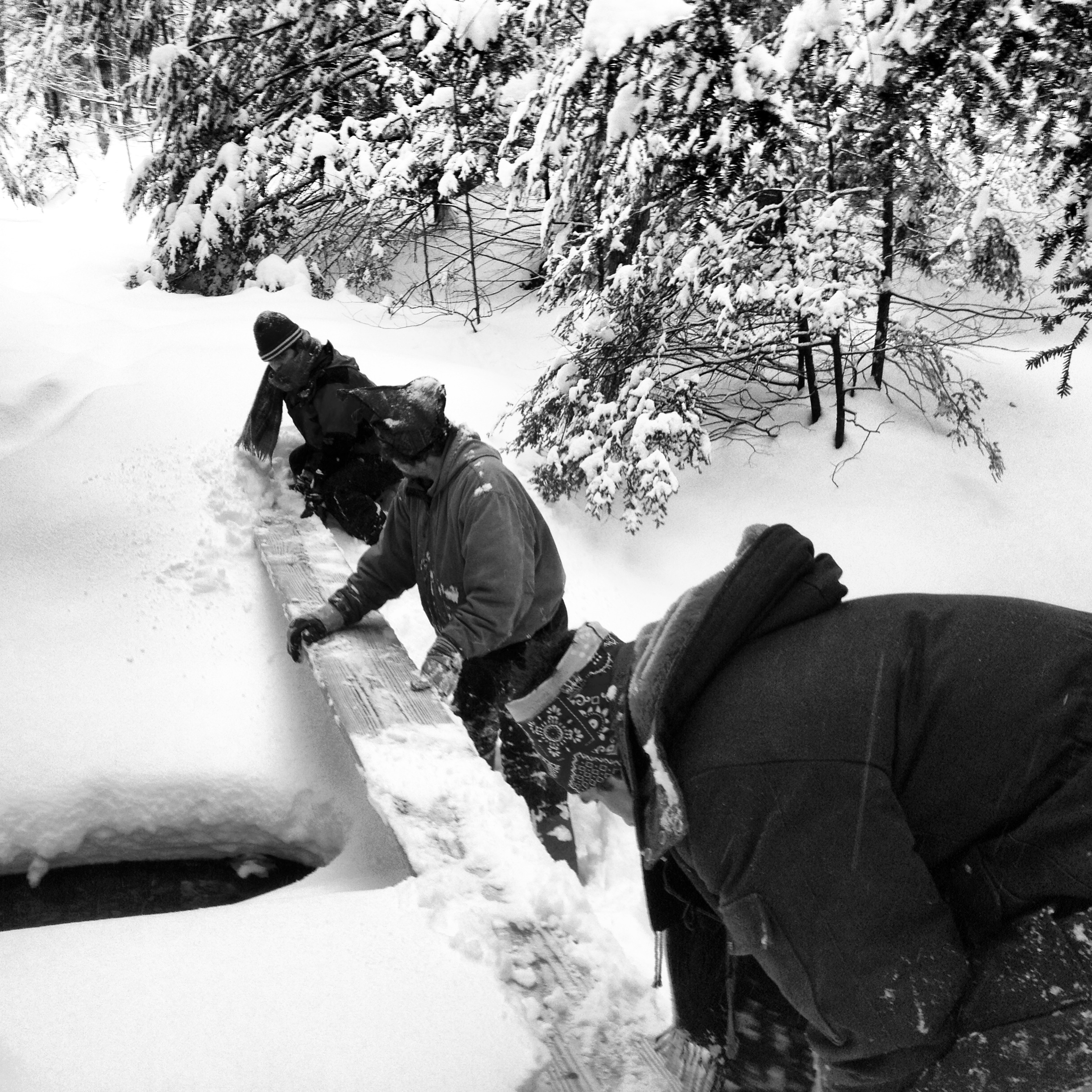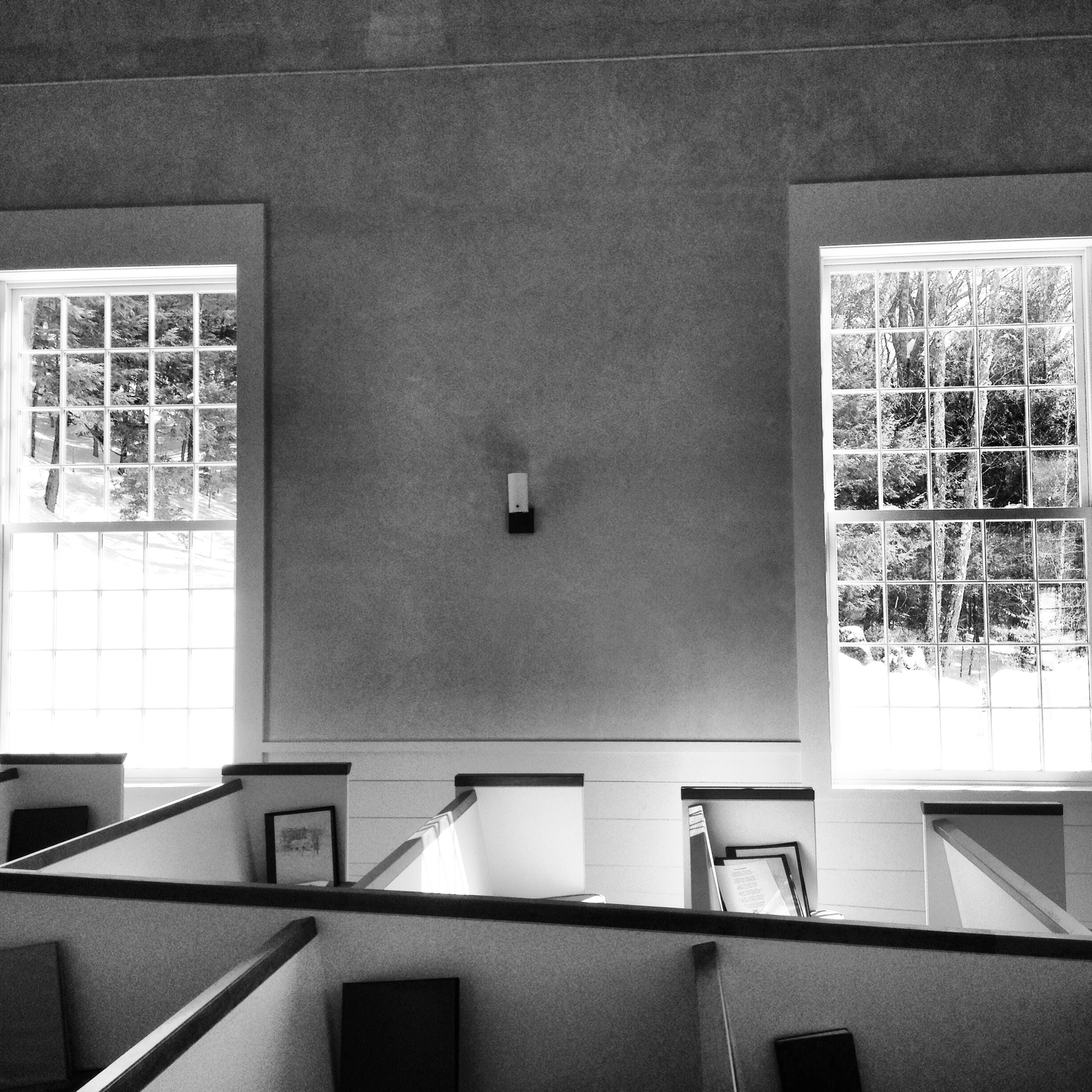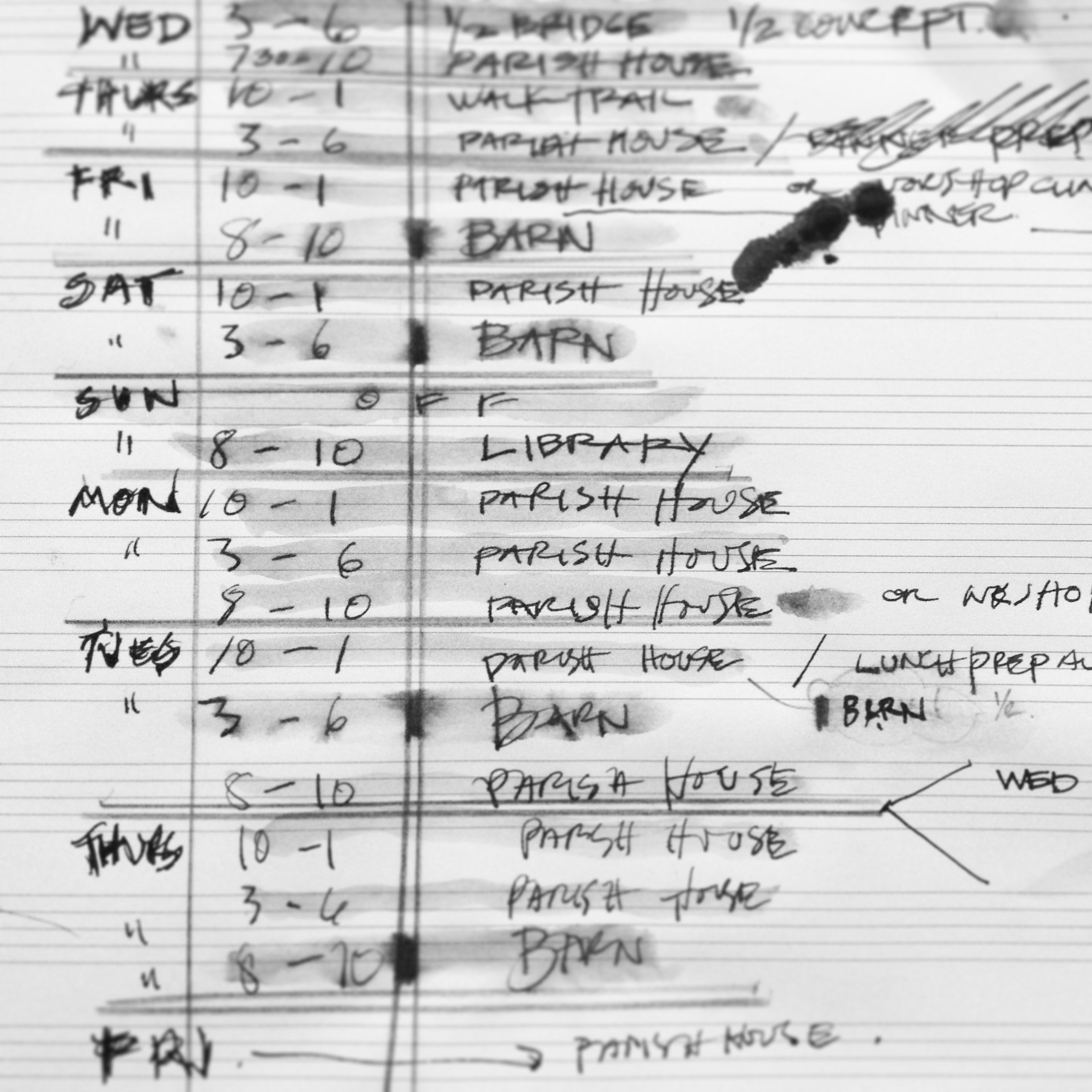In February, 2014 an incredible and diverse group of artists, scientists and activists gathered at EarthdanceCenter for Creative Living Residency and Retreat Center in Plainfield Massachusetts, and embarked upon a creative journey together, and within the community through the E|MERGE Interdisciplinary Artist Residency. I was blessed to be a part of it, and a collaborating artist on The Oracle Project, conceived by project leaders Cory Neale and Nicole Nigro, with Christos Galanis spear-heading the blazing of a lost trail from Earthdance to the West Cummington Church. The Oracle Project was a study of oracle within self, life, art making, and community, and a massive experiment in collaboration for all artists involved, which included: Cory Neale, Nicole Nigro, Christos Galanis, Alex Kramer, Adriana Segurado Mendez, and myself, Maré Hieronimus.
The Oracle Project collaboration was conceived as a four-hour performance event, which consisted of moving the audience through several experiences. This event was staged by the collaborators, with each of us playing an integral role in its creation, while simultaneously specializing in the areas most engaging to us as artists. After an “oracle ritual” in the Barn Studio of the Earthdance Center, audience members had the choice of taking part in the 1:30 hour, 1.5 mile walk on the lost trail that meandered over a small wooded mountain which was buried under frozen feet of snow. After the walking portion of the event, and guided by Christos Galanis, the audience members came upon a separate trapeze site installation in a nearby tree, by the Oracle Project resident trapeze artist, Adriana Segurado Mendez.
Journeyers were then directed to the final site of the Performance, at The West Cummington Church, which included the outdoor surrounding area of the church building, as well as it’s indoor environment. Two separate site installations bookending the outside of the church were created, including my own installation, Field of Twigs, and a separate site installation by Nicole Nigro, consisting of a large square piece of blue fabric placed over the white, frozen snow, lit by candle light, upon which Nicole Nigro stood and moved.
The Oracle Project culminated inside the church itself, with a separate dance site work, co-created by Nicole Nigro, Adriana Segurado Mendez, and myself, with an original soundscore by Cory Neale, and original song composed and directed by Oracle Project collaborator and fiddler extraordinaire Alex Kramer, as well as additional ethereal music from the Church Choir.
For my site installation within The Oracle Project, Field of Twigs, I drew inspiration from my recent and ongoing solo rise, in which bundles of twigs and branches are used as imbued objects, becoming an extension of the body, and conductors of the dance. rise is also concerned with the notion of body as field or instrument through which forces of sound, light, thought, image, emotion, space and time are passing through.
For the construction of this site installation, I gathered fallen branches from the woods of the lost trail, and the Earthdance surrounding area. I also drew direct inspiration from Walter De Maria’s epic land art, The Lighting Field. This long-term installation in the plains of Western New Mexico consists of a field of 400 stainless steel lightning poles arranged in a grid like rectangle, 1 mile x 1 kilometer in scope. These poles become conductors of the forces of electricity, lighting up the sky and bringing bolts of light directly down to the earth. I am specifically philosophically and experientially interested in the notion of body as conduit, instrument and conductor of forces, much like the lightning poles in De Maria’s work. For my intimate homage to this large-scale piece, I planted the deadened, painted, fallen branches and twigs into the frozen feet of snow beside the West Cummington Church, allowing them to stick upward, simulating the lightning poles, and directing the eye towards the sky. Within the performance installation, the moving body was to act as the conductor of forces, rather than specifically the twigs themselves.
Field of Twigs is also the investigation of the notion of Oracle as state of being, or Oracle as state of consciousness within the self. I was, and have been for many years, interested in the shifting of consciousness through movement, and how it is that these windows of memories, images, premonitions or even visions can pass through the body-mind-consciousness, through the vehicle of dance. This can be witnessed most especially in shamanic dance practices, but I feel these experiences are also available to others who are not directly trained within these lineages, and that the field of somatic practice has radically shifted the way in which dancers now inhabit their bodies. I feel these practices potentially give rise to something akin to shamanic states of consciousness through movement. This has been an interesting continued experiment for me, and more research needs to be done before I can write fully about it (this is a larger body of research that I am just beginning to sink into).
By night, the Field of Twigs installation was lit through candle light, and a quiet dreamscape was created, haunting and remotely post-apocalyptic in feel. I inhabited this environment through dance on the frigid evening of the performance event, when the audience members arrived at the West Cummington Church, after walking the lost trail.
The whole experience was incredibly rich and diverse. Challenges were had, but the beauty of the collaboration truly began to sing when we were able to speak about the conflicts that surfaced, and find a space where each person was given voice at our table. Ultimately this experience was almost utopian for me: living and working together with 30 artists from all over the world who ranged widely in age, gender, and race, it was the unfolding of a fresh way of being in relationship to self, to fellow artist, and to community: non-hierarchical, community-driven, with each artist having a deep commitment to their own unique practice and vision, while simultaneously remaining overwhelmingly generous and open to new ideas and ways of engaging their particular art form, and the notion of oracle in life in general.
I have been left with many questions about The Oracle Project, and Field of Twigs, and my own continued dance/art practice. But I seem to have more questions about the place of art in our world today, questions that have gnawed at me my entire adult life as an artist. Living in such a utopian community, I could not help but wonder again about the separation of art and life, art and spirituality, art and everyday being. I have questions about the incredible function and power that art can have within our lives and culture, and wonder why these functions are not fully utilized because of lack of funding, lack of knowledge, lack of community and common vision. I have questions about why art, and dance art in particular (as it is my primary form), continue to struggle for place, space, understanding and audience; and I have questions about how we as artists can continue to do our work, together, within community, and bridge these gaps. This is work that I truly feel, no matter how many people see it, that it has impact, and that it does matter. And yet, I think it is also important that more people are able to see this kind of collaborative, multidisciplinary work, and experience its impact first hand, and within their lives. There is so much that can be received from the witnessing of such work, and so much that can be taken from these new models of collaboration and living that subvert age-old and tired notions of power and dominance, and celebrate multi-generationalism, multi-genderism, multi-racialism, all within a communal living situation.
Not everyone has the desire to live this way, and I am not really suggesting this. But there is a balance to be struck, and I feel there is a such a driving sense of isolationism that underlies our American culture, from the old world pioneers who pushed out west, to the self-made millionaires, then billionaires, there is a deep-seated sense if individualism that is essentially focused on self-preservation and self-motivation. This wild individualism celebrates the uniqueness of each of us, and in its highest form sings the "song of myself", as Walt Whitman put it. And yet, if taken too far, it separates us so deeply from one another, and can cause a self centered-ness, and a selfishness, that feels insanely destructive. We need each other, we need community, we need a feeling of togetherness as the world becomes increasingly complex and global, and we wonder, for example, why people living in NYC, one of the most densely populated places in the world, still feel so desperately alone and isolated. It is part of the experience.
How can art bring us together more, and gather us into community, and bring us into relationship to one another in healthier, fuller ways? From the first ritual dances and cave paintings and miniature figurines of ancient times, whatever their ultimate purposes were (as they remain mysterious), we do know that bringing people together in meaningfulness was at the very least one of the functions of art. We as human beings have always made things, dances, paintings, sculptures, songs, to mark time and life and meaningful events through symbol, metaphor, or illustration. Life without marking these moments ceases to feel as meaningful. And life without the feeling of meaning is an empty and lonely place to live.
As artists, it is important for us to keep creating, however many people come to know what we do. I resonate with the quote by Joseph Campbell, that "I don't believe that people are looking for the meaning of life as much as they are looking for the experience of being alive". This experience then creates a feeling of meaningfulness. And through the creation of these very particular spaces and places, the world for me is made more whole, new perceptions are given time to arise, new ways of thinking are given space to surface, and I feel what it is to be alive and living. These experiences, within this American culture, this time and place and space, are difficult to sustain. Lack of funding, lack of time and space, lack of understanding of the meaningfulness and purposefulness of art, and a decentralized community: These are the beautiful challenges that we face as artists living in our world today. I feel honored to have had the time to be able to reflect upon these larger issues, and to reflect upon a practice of non-hierarchical collaborative process and practice. These experiences become a catalyst for transformation, and with it comes the opportunity to bring these reflections (with all the questions that they bear) forward into my continued art/life.





